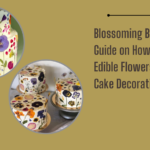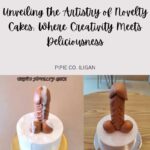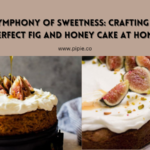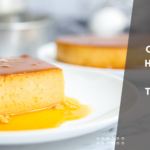Introduction:
In the realm of culinary creativity, cake decoration stands out as a delectable form of edible art. While baking a delicious cake is a skill in itself, adorning it with intricate and eye-catching designs elevates the culinary experience to a whole new level. Just as a painter uses a canvas, a cake decorator uses the cake as their artistic medium. In this blog, we will explore the delightful world of cake drawings and unveil strategies that can help you master this sweet artistry.
- Plan Your Design:
Just as any other art form, a successful cake drawing starts with a well-thought-out plan. Consider the theme, occasion, and color scheme before diving into the creative process. Sketch your design on paper first to visualize the layout and placement of elements. This planning phase will serve as your roadmap throughout the decorating journey. - Choose the Right Tools:
Equipping yourself with the right tools is essential for achieving precision in cake drawings. Invest in quality piping bags, tips, and spatulas to ensure smooth and controlled application of icing. Different tips create various effects, so experiment with a variety to discover which ones suit your design best. - Master the Basics of Piping:
Piping is the cornerstone of cake decorating. Understanding the basics of piping techniques such as outlining, flooding, and detailing is crucial. Practice creating consistent pressure and movements to achieve clean lines and well-defined shapes. Start with simple designs and gradually progress to more intricate patterns. - Color Harmony:
Paying attention to color harmony is paramount in cake drawings. Choose a color palette that complements the overall theme and enhances the visual appeal of your creation. Experiment with different shades and tints to add depth and dimension to your design. - Texture and Dimension:
Elevate your cake drawings by incorporating texture and dimension. Experiment with different icing consistencies to create raised or textured elements. Techniques such as ruffles, rosettes, and basketweave can add a three-dimensional aspect to your design, making it more visually interesting. - Stencils and Templates:
For those who are new to cake drawings, using stencils and templates can be a helpful starting point. These tools provide guidelines for creating intricate patterns and shapes with precision. As your skills progress, you can gradually transition to freehand designs. - Edible Art Paints:
Edible art paints open up a whole new realm of possibilities for cake decorators. These paints allow you to add intricate details and vibrant colors directly onto the cake’s surface. Experiment with different brushes and painting techniques to create edible masterpieces. - Practice, Practice, Practice:
Like any skill, mastering cake drawings takes practice. Set aside time to hone your craft regularly. Challenge yourself with new designs and techniques to continually push your creative boundaries. With each practice session, you’ll notice improvements in your precision and artistic expression.
Conclusion:
Cake drawing is a delightful blend of creativity and culinary skill, offering a unique way to express yourself through edible art. By incorporating these strategies into your cake decorating journey, you can elevate your skills and create visually stunning confections that not only taste delicious but also captivate the eyes. So, unleash your creativity, embrace the sweetness of cake drawing, and let your imagination run wild on your next baked masterpiece.







